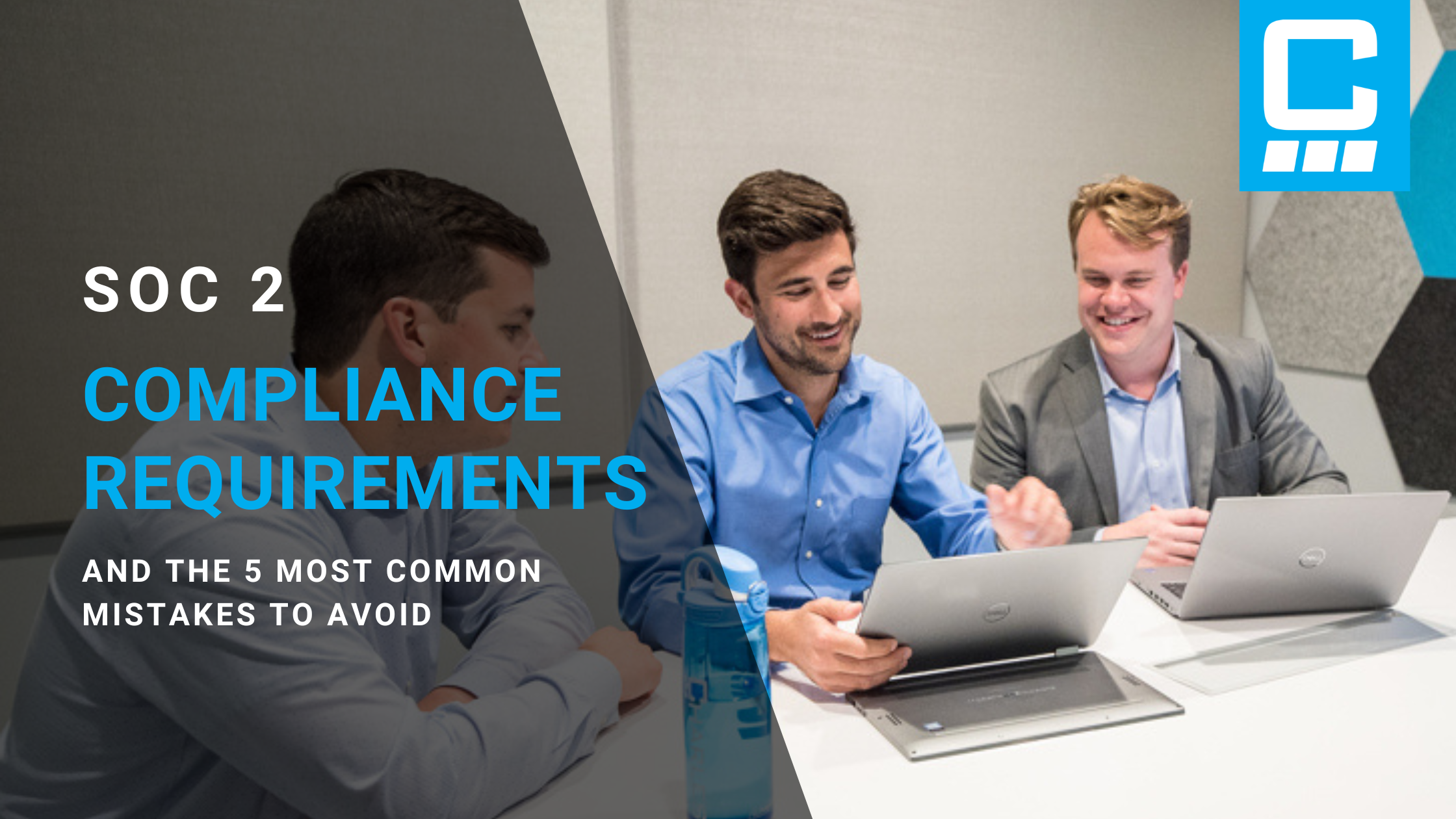
Passing a SOC 2 audit validates your efforts to achieve a high standard of security and privacy. It can be a powerful tool in demonstrating your company’s commitment to keeping customer data safe and can open the door to new and continued business.
Although there is some room for flexibility, SOC 2 compliance requirements aren’t easily met, especially for organizations preparing for their very first audit. This is why understanding the most common mistakes made by others can help you ensure you pass your SOC 2 audit with flying colors.
SOC 2 Compliance Requirements
A SOC 2 audit can only be carried out by a certified public accountant (CPA) since the American Institute of CPAs introduced the standard. Moreover, audits must be carried out by an external third party, although you can conduct a mock in-house audit as part of your preparation for a real one.
After you've been audited, you'll receive a compliance report detailing the auditor’s evaluation of your computing infrastructure across various areas. The SOC 2 categories, officially known as the five Trust Services Criteria, include:
- Data Security - How do you protect your and your client's data, and what defenses do you have against cyber attacks?
- Availability - What are you doing to minimize downtime, manage capacity and usage, and identify environmental threats?
- Processing Integrity - Can you ensure that all your systems are operating the way they should?
- Confidentiality - How do you ensure information is securely shared, so it remains confidential?
- Privacy - Do you follow appropriate procedures for collecting, storing, using, and protecting sensitive information?
It's also important to be aware that there are three types of SOC 2 reports:
- Type 1 evaluates your current environment at a single point in time.
- Type 2 test your compliance with the five trust services criteria over a specific timeframe, with six months being the minimum requirement.
- Type 3 is similar to a Type 2 report, but all potentially sensitive details are redacted to make it suitable for public release.
Common Mistakes to Avoid In Your First SOC Audit
No. 1 | Have a dedicated project manager.
Meeting the SOC 2 data security requirements is no easy task, especially if you don’t have a fully staffed IT department. Few SMBs have that kind of in-house team, so it's recommended that you enlist the help of a designated project manager.
Having a project manager is vital for streamlining the flow of information around your company. SOC 2 compliance requirements are broad in scope, requiring businesses to collect data across all operations. Having a single point of contact to oversee the process will help things go much faster and more efficiently.
No. 2 | Perform external vulnerability testing.
When preparing for a SOC 2 audit, it’s imperative that you start by doing everything you can to locate and resolve any potential vulnerabilities. This is best achieved by running a gap assessment to evaluate your entire computing infrastructure from an outside perspective. In some ways, a gap assessment is much like a practice audit.
Combining your gap assessment with penetration testing, 'pen testing,' is highly recommended. This approach uses a similar range of methods to infiltrate your network as those cybercriminals use, thereby simulating a cyber attack and identifying more sophisticated potential attack vectors.
No. 3 | Don't confuse the Five Trust Service Principles.
The Trust Services Framework identifies five main areas that will be evaluated during an audit. There’s a fair amount of crossover between them, but the most important is the Security Criteria, also known as the SOC 2 Common Criteria. It addresses the risk management requirements that apply across the other four criteria as well.
For example, the security criteria mandates end-to-end encryption to protect customer data in transit. This safeguards both privacy and confidentiality while also securing sensitive data from data exfiltration. Some of your clients may ask for all criteria to be included in your report, so it makes sense to take a comprehensive approach.
No. 4 | Document your security program.
You can’t protect what you don’t know, which is why every information security program needs to be thoroughly documented. For example, the National Institute of Standards and Technology (NIST) clearly sets out cybersecurity requirements across a range of categories, and it's one of the most widely recognized global standards. If your controls align with NIST, and you have the documentation to prove it, you should be much closer to passing a SOC 2 audit.
Your documentation should be accompanied by a complete inventory of your digital assets, including individual endpoints, virtual machines, mobile devices, and user accounts. A SOC 2 compliance report will evaluate every data-bearing device and system in your organization, so it’s important to have comprehensive documentation and up-to-date system inventory.
No. 5 | Carry out a readiness assessment.
Ensure readiness before scheduling a SOC 2 audit. Rushing into it can lead to serious repercussions such as lost business and non-compliance with federal regulations. Conduct a thorough gap assessment beforehand to identify and address vulnerabilities. Even after the initial audit, ongoing testing is crucial, particularly with the implementation of new security measures. For SOC 2 Type 2 reports spanning six to nine months, conduct an interim readiness assessment approximately three months prior. SOC 1 vs SOC 2 comparisons can inform your approach.
Charles IT can perform a detailed assessment of your current security posture and recommend solutions to help prepare you for your SOC 2 audit. Call us today to get certified.
Editor's Note: This post was originally published in February 2021 and has been updated for accuracy and comprehensiveness.






